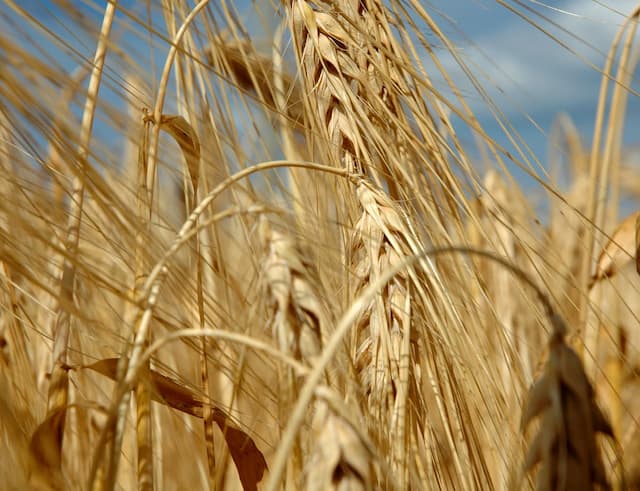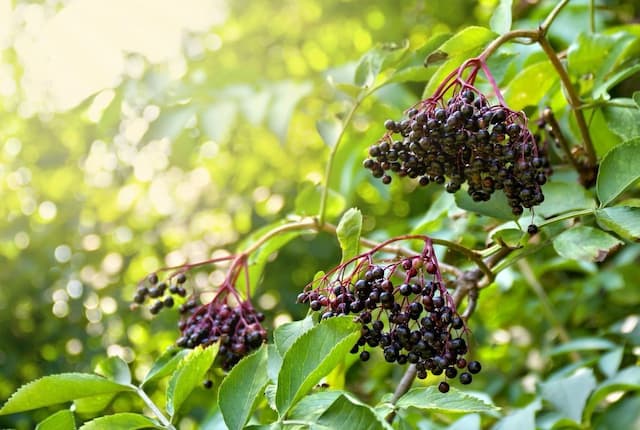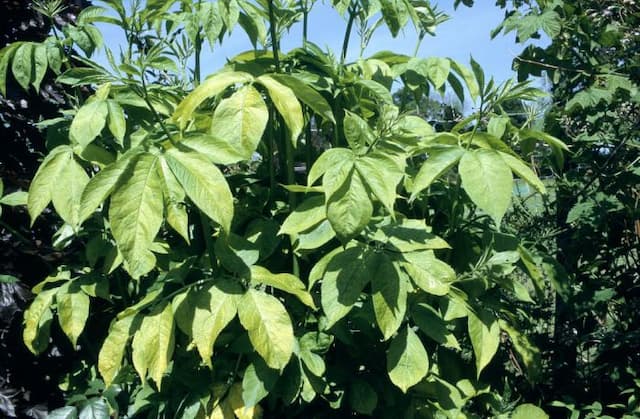Branched Viburnum Viburnum furcatum

ABOUT
The plant known as Viburnum furcatum is a deciduous shrub that is part of the honeysuckle family. It is noted for its distinct branching pattern which is somewhat horizontally tiered, resembling a pagoda structure. The branches themselves are stout and it often exhibits a forked or "furcate" appearance which contributes to its common name. The leaves of this shrub are arranged in an opposite fashion, meaning they pair up on either side of the branch at the same node. These leaves are broadly ovate to rounded, boasting a deep green color and a slightly serrated edge, giving them a textured feel. During the autumn season, the foliage undergoes a remarkable transformation, taking on hues of reddish-purple that add to the visual interest of the plant. In terms of its blooms, it features showy inflorescences in the form of flat-topped clusters known as cymes. These flower clusters can be quite striking and consist of numerous small white blossoms which together create a lace-like effect. Each tiny flower contributes to an overall display that is both elegant and appealing to pollinators. Following the flowering period, the plant produces fruit that can further enhance its ornamental value. The fruit typically develops into a small, berry-like structure, often initially red which turns to black as it matures. These berries are appreciated by wildlife, making the shrub an excellent choice for supporting local ecosystems. Additionally, the bark of the Viburnum furcatum adds to its overall attractiveness especially in winter, when the leaves have fallen. Its texture and color provide interest in the otherwise bare winter landscape. Altogether, Viburnum furcatum's tiered growth habit, attractive foliage, charming flowers, and small fruits render it a captivating plant with multi-seasonal interest, aside from its size.
About this plant
 Names
NamesFamily
Adoxaceae
Synonyms
Branched Viburnum, Forked Viburnum
Common names
Viburnum furcatum Blume.
 Toxicity
ToxicityTo humans
The plant known as Viburnum, specifically Viburnum furcatum, is generally not considered highly toxic to humans. However, like many plants, it may cause mild stomach upset if ingested in large quantities due to the presence of saponins and other potentially irritating compounds. Symptoms could include nausea, vomiting, and diarrhea. It is advised to avoid eating any parts of ornamental plants like Viburnum due to the potential for mild toxicity.
To pets
Viburnum, including Viburnum furcatum, is not known to be highly toxic to pets either. If a pet were to ingest a large amount of Viburnum, the most likely symptoms would be gastrointestinal upset, such as vomiting or diarrhea. It's important to prevent pets from eating large amounts of any non-food plant, as they could have a sensitive reaction or could choke on plant material. Always monitor your pets in areas with ornamental plants and consult a veterinarian if you suspect your pet has consumed a potentially toxic plant.
 Characteristics
CharacteristicsLife cycle
Perennials
Foliage type
Deciduous
Color of leaves
Green
Flower color
White
Height
6 feet (1.83 meters)
Spread
6 feet (1.83 meters)
Plant type
Shrub
Hardiness zones
6
Native area
Japan
Benefits
 General Benefits
General Benefits- Landscape Aesthetics: The Viburnum furcatum, commonly known as the Forked Viburnum, contributes ornamental value to landscapes with its attractive foliage, flowers, and fruit.
- Wildlife Habitat: Provides food and shelter for various species of birds and insects, enhancing biodiversity.
- Seasonal Interest: Displays a variety of seasonal changes from blooms in spring, vibrant leaf colors in autumn, to berries in winter.
- Erosion Control: Can be used in landscaping to stabilize soil and prevent erosion due to its robust root system.
- Privacy Screen: Grows densely, making it suitable for use as a natural privacy screen or hedging plant in gardens and parks.
- Low Maintenance: Generally requires minimal care once established, making it a good choice for gardeners of all skill levels.
- Drought Tolerance: Exhibits some level of drought resistance, which is beneficial in areas prone to dry spells.
 Medical Properties
Medical Properties- There is insufficient evidence to include medical properties for Viburnum furcatum, and no well-documented medical uses for this plant are known as of the current knowledge cutoff date.
 Air-purifying Qualities
Air-purifying QualitiesThis plant is not specifically known for air purifying qualities.
 Other Uses
Other Uses- Viburnum furcatum can be used for ornamental purposes due to its attractive foliage and branching structure, enhancing the aesthetics of gardens and parks.
- The dense branching habit of Viburnum furcatum makes it suitable as a privacy hedge or screen in landscaping projects.
- Its flowers, which bloom in spring, are a source of nectar for pollinators such as bees and butterflies, supporting local ecosystems.
- The berries of Viburnum furcatum provide food for various birds and wildlife, aiding in the survival of different species during colder months.
- Crafted branches and stems of Viburnum furcatum can be used in floral arrangements and decorations for their intricate structure and durability.
- The hardwood of Viburnum furcatum can be utilized in small woodworking projects for making items like handles and crafts.
- This plant can serve as a windbreak in rural and agricultural settings due to its robust growth and ability to withstand strong winds.
- The leaves of Viburnum furcatum can be used to create a natural dye for fabrics, giving a range of colors from yellow to green depending on the mordant used.
- In educational settings, Viburnum furcatum can be used in botany studies to teach plant identification and the characteristics of the Adoxaceae family.
- During autumn, the changing leaf colors provide an educational observation opportunity for children and adults learning about seasonal changes in plants.
Interesting Facts
 Feng Shui
Feng ShuiThe Viburnum is not used in Feng Shui practice.
 Zodiac Sign Compitability
Zodiac Sign CompitabilityThe Viburnum is not used in astrology practice.
 Plant Symbolism
Plant Symbolism- Renewal: Viburnum often blooms in the early stages of spring, representing new beginnings and the refreshment of nature.
- Perseverance: Due to its hardiness and the ability to withstand various climates, the plant signifies resilience and the ability to thrive in diverse conditions.
- Protection: Some cultures consider viburnum to provide protection because of its dense growth, offering shelter and a safe haven for birds and other wildlife.
 Water
WaterThe Japanese Snowball, commonly known as Viburnum furcatum, prefers consistently moist soil but does not tolerate standing water. It should be watered deeply once a week, amounting to about 1.5 inches of water. During hot or dry spells, it may require additional water, so checking the soil moisture regularly is important; it should be moist but not soggy. During the winter months, reduce watering but do not allow the soil to become completely dry. Water the plant at the base to avoid wetting the foliage, which can lead to fungal diseases.
 Light
LightJapanese Snowball thrives in a spot with partial to full sunlight. It can tolerate a variety of light conditions, but for optimal blooming and healthy growth, it should receive at least 4-6 hours of direct sunlight. However, in regions with very hot summers, it's best to provide afternoon shade to prevent leaf scorch.
 Temperature
TemperatureThe Japanese Snowball is hardy and can withstand temperatures as low as 0 degrees Fahrenheit, but it prefers to grow in areas where the average temperature ranges between 60-75 degrees Fahrenheit. It is important to protect it from extreme cold winds and heavy frost, so planting in a sheltered location is advantageous.
 Pruning
PruningPrune the Japanese Snowball to maintain shape and encourage vigorous growth. The best time for pruning is immediately after the plant has finished flowering, usually in late spring. This allows time for next year's flower buds to develop. It's also a good time to remove any dead or damaged branches to keep the plant healthy.
 Cleaning
CleaningAs needed
 Soil
SoilThe Branched Viburnum prefers well-draining soil that is rich in organic matter with a pH of 5.5 to 6.5. A good mix can be created with loamy garden soil, compost, and perlite or pine bark to improve drainage. Regular mulching can help maintain soil moisture and nutrient levels.
 Repotting
RepottingBranched Viburnum should be repotted every 2-3 years to prevent the plant from becoming root-bound and to replenish its soil. It's best to repot in early spring before new growth begins, using a slightly larger pot each time to accommodate root growth.
 Humidity & Misting
Humidity & MistingThe Branched Viburnum is adaptable but does best with average to high humidity levels. Aim to maintain humidity around 40-60% for optimal growth without the need for special humidity adjustments in most temperate climates.
 Suitable locations
Suitable locationsIndoor
Provide bright indirect light, water when topsoil is dry.
Outdoor
Plant in partial sun, shelter from harsh winds, mulch well.
Hardiness zone
7-9 USDA
 Life cycle
Life cycleViburnum furcatum, commonly known as Forked Viburnum, starts its life cycle when its seeds germinate in the soil during favorable conditions, often in a well-drained and partially shaded environment. As a seedling, it develops a root system and a shoot that grows into a young plant, with leaves starting to photosynthesize to produce energy for growth. Once mature enough, the plant enters the vegetative stage, during which it grows to its full size, develops woody stems, and forms a branching structure. During the reproductive stage, Forked Viburnum produces clusters of small, white flowers, which are hermaphroditic and pollinated by insects, leading to the formation of fruit. The fruits are red to black berries that mature, and once they fall to the ground or are dispersed by animals, they have the potential to germinate and start the cycle anew. Over years, the plant can form a multi-stemmed shrub that may reach significant size, and in its mature form, it continues to undergo this cycle of growth, flowering, and fruiting.
 Propogation
PropogationPropogation time
Late Winter to Early Spring
The most popular method for propagating Viburnum furcatum, commonly known as branched viburnum, is through softwood cuttings. This technique is typically undertaken in late spring or early summer when the plant’s new growth is just beginning to harden but is still flexible. A gardener would select a healthy, non-flowering shoot and cut a segment approximately 4 to 6 inches (10 to 15 centimeters) long, making sure it includes at least two sets of leaves. The lower leaves are removed, and the cut end of the cutting may be dipped in rooting hormone to encourage root development. The cutting is then planted in a well-draining potting mix, ensuring the remaining leaves are not buried. The potted cutting needs to be kept in a warm, humid environment with indirect sunlight until roots have developed, which can typically take several weeks. Regular misting will help maintain the necessary humidity.



![Elder [Black Tower]](/_next/image?url=https%3A%2F%2Fplants-admin.emdemapps.com%2Fimages%2Fplants%2F%2Fimages%2F604b5cad99578.png&w=640&q=75)





